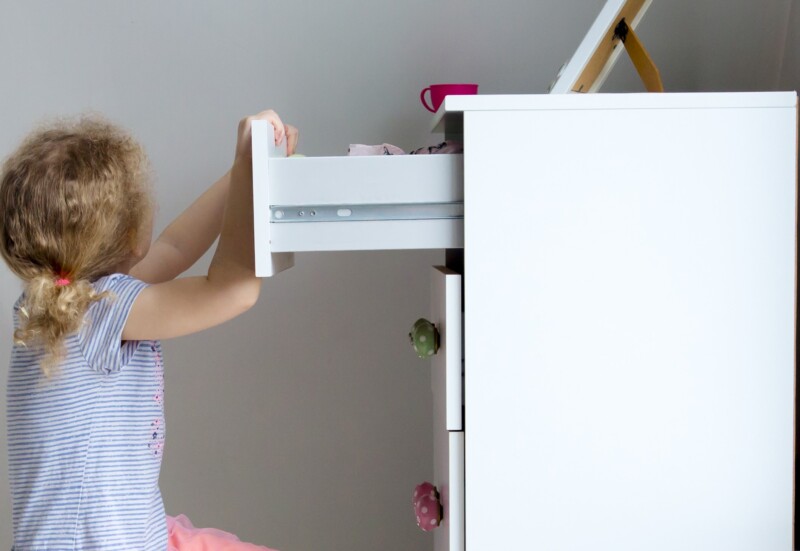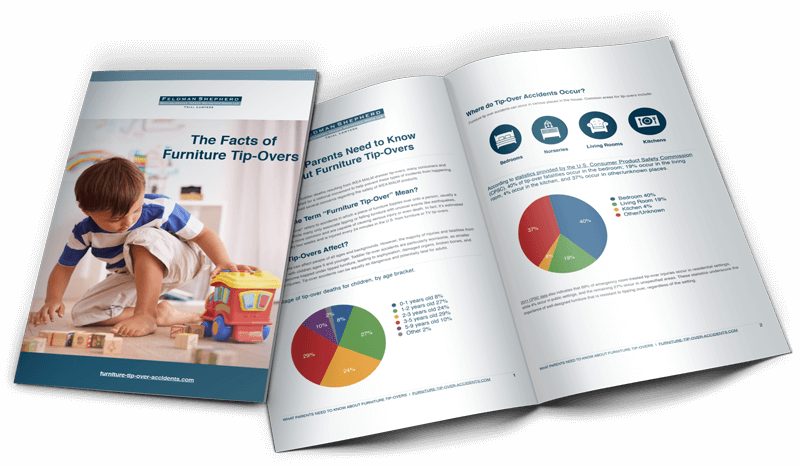Congratulations to Our Dresser Tip-Over Clients Who Won the Fight to Keep Children Safe in Their Bedrooms
In the waning days of 2022, as the end was nearing for the 117th Congress, a group of determined parents who fought tirelessly for nearly two decades to protect children from serious injury and death from dresser tip-overs finally got their hard-earned victory; the STURDY Act (Stop Tip-Overs of Unstable, Risky Dressers on Youth Act) was passed by Congress and signed into law by President Biden.
Several former Feldman Shepherd clients whose children died from IKEA dresser tip-overs — who wanted to spare other families from tragedies similar to their own — were among the brave parents (and other consumer advocates and child safety experts) who lobbied for the STURDY Act. It was a nail-biting finish for this life-saving legislation, as this was the third attempt by lawmakers in recent years to strengthen the safety standard. Similar bills introduced in the 115th and 116th Congresses did not make it to the finish line. As time was running out for lawmakers to pass the STURDY Act as a stand-alone bill, it was inserted into and passed as part of the unrelated $1.7 trillion omnibus spending bill, which was the final bill taken up by the 117th Congress.
What Does the STURDY Act Do?
The STURDY Act — which received bipartisan support, as well as support and collaboration from a broad group of stakeholders, including consumer advocates, the furniture and retail industries, and child-safety experts — directs the Consumer Product Safety Commission (CPSC) to adopt a mandatory safety standard for the stability of all dressers made or sold in the United States. Dressers will now have to pass tip over performance testing that simulates real-world use — for instance, placement on carpeting, drawers with items loaded in them, and the dynamic force a toddler exerts when climbing a dresser or pulling on a drawer. Previously, the stability of dressers was governed by nothing more than a voluntary standard created primarily by the furniture industry itself.
The law supersedes a mandatory federal safety standard for dressers passed by the CPSC in October 2022, which was set to take effect in May 2023. While child safety advocates (including parents who have lost children to dresser tip-overs) supported the CPSC standard, key players in the U.S. residential furniture industry did not, and have challenged it in a federal lawsuit. As a result, the CPSC standard was likely to be mired in protracted litigation.
The safety reforms set forth in the STURDY Act will take effect in mid-2023.
How Many Children Are Injured by Dresser Tip-Overs?
From January 2000 through April 2022 there were 234 reported fatalities from dressers tipping over, including 199 child fatalities, according to the CPSC. The CPSC estimates that there were 84,100 dresser tip-over-related injuries (an estimated annual average of 5,300 injuries) treated in U.S. hospital emergency departments from 2006 through 2021. Of these, an estimated 72 percent were injuries to children.
Unstable dressers are particularly risky for curious toddlers, as starting at about age 2 they may open multiple dresser drawers or attempt to climb or sit in a drawer. Unfortunately, young children do not have the strength to prevent a dresser from falling or to lift a dresser that has tipped over onto them. Making an already dangerous situation worse, tip-over accidents often occur when parents think their child is safely asleep in bed, and parents may not hear the dresser fall because the child’s body and carpet often cushion the impact. And for every tip-over that causes injury, there are hundreds of “near misses” where a toddler manages to get out of the way, or a nearby adult catches the dresser, or it falls onto a bed or other nearby object.
Can’t Dressers Be Made Safe by Anchoring Them to a Wall?
While manufacturers (and some members of the public) argue that dresser tip-overs could easily be prevented if consumers would simply anchor their furniture to a wall, this argument ignores real-world considerations. For instance, many people do not own or know how to use power tools and are not comfortable with drilling holes into their walls and furniture. Also, many families are not permitted to make holes in the walls of rented apartments, or they may have baseboard heating which prevents a dresser from being positioned flush against the wall. A Consumer Reports investigation in 2018 found that only 27 percent of Americans have anchored furniture in their homes. Anchors clearly are not a substitute for high-quality, safe design of dressers that are stable and tip-resistant.
Will the New Law Eliminate All Unsafe Dressers?
The new law is not retroactive, and an untold number of unsafe and unstable dressers will remain in use in people’s homes.
From January 2000 through July 2022, there have been 43 recalls in response to dresser tip-over hazards, involving more than 21 million dressers. You can check the CPSC public database of product recalls to find out if the dresser in your home has been recalled.
Preventing Future Tragedies
Every day at Feldman Shepherd, we are inspired by so many of our clients who turn their grief into purpose and work resolutely to save other families from preventable tragedies. We extend our gratitude and appreciation to all our furniture tip-over clients and celebrate their momentous victory.


